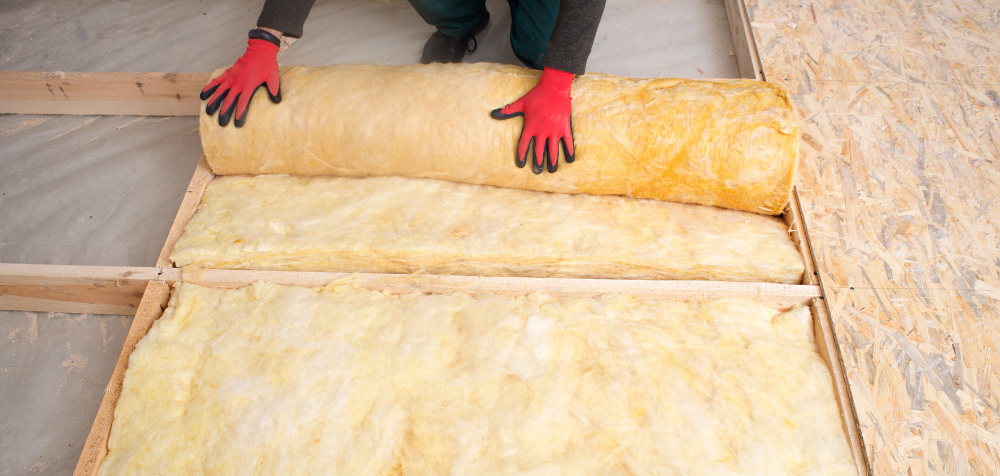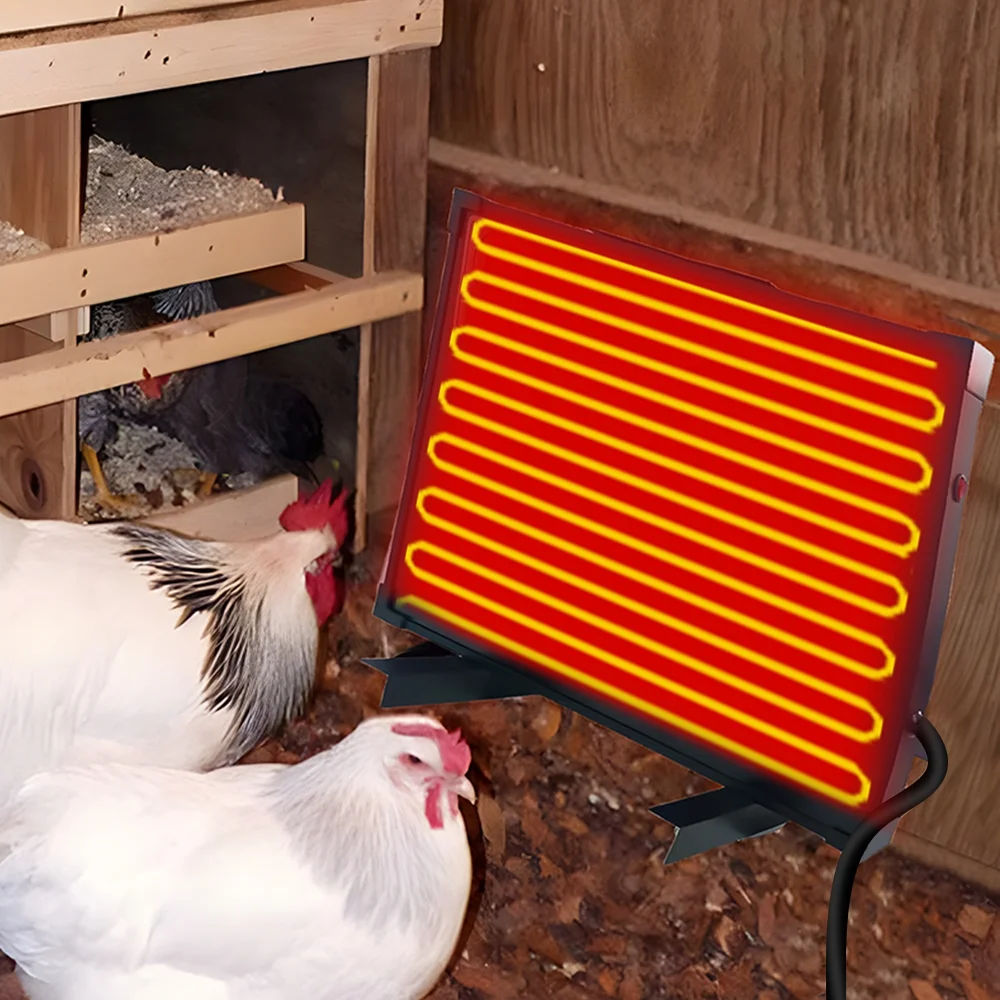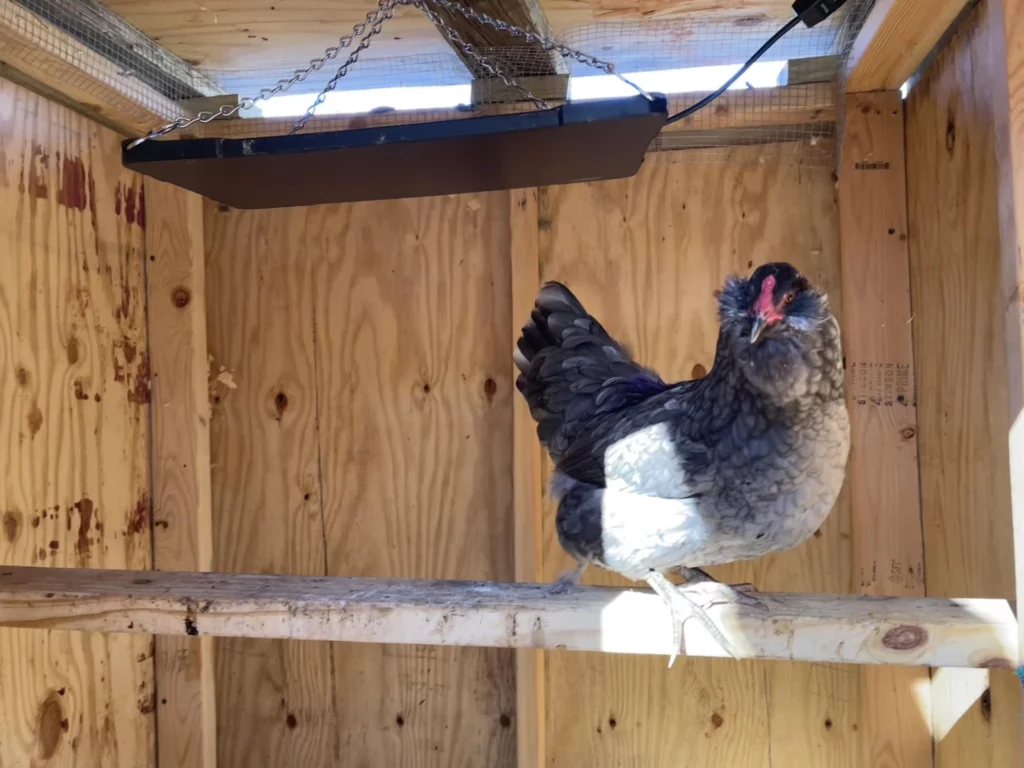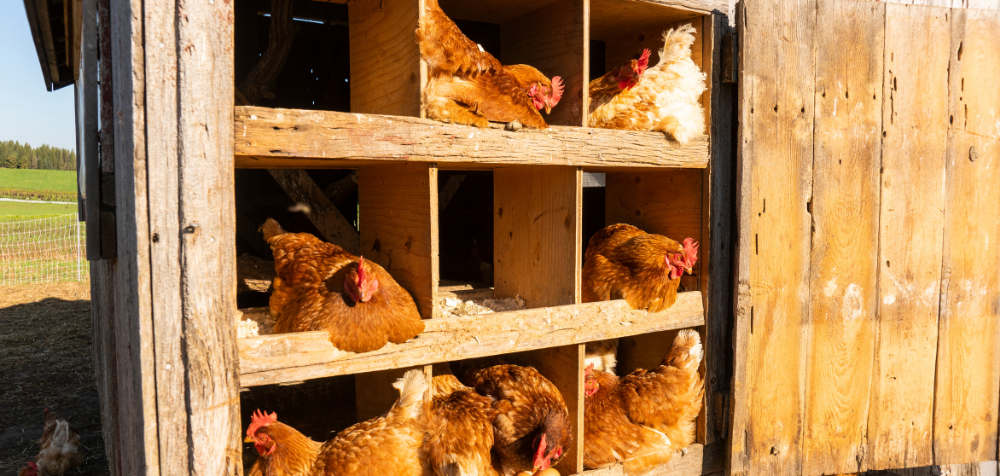Winter can be a challenging time for backyard chicken owners. As temperatures drop, keeping your chickens warm becomes essential to their health and egg production. With the right chicken coop heating solutions, you can create a cozy environment for your feathered friends while ensuring their safety.
In this post, we’ll explore the top 10 ways to heat your chicken coop during winter.
Whether you’re new to chicken keeping or a seasoned pro, these solutions will help you prepare for the cold months ahead.
1. Insulated Chicken Coop

Before diving into heating devices, the first step in chicken coop heating should be insulation. Proper insulation can make a world of difference in maintaining a stable temperature inside the coop.
Adding insulation to the walls, roof, and floor reduces heat loss, meaning your coop stays warmer for longer periods.
You can use materials like foam boards, straw bales, or even recycled materials to create insulation. Don’t forget to cover windows and doors with draft stoppers to prevent cold air from creeping in.
Benefits:
- Helps maintain a consistent temperature
- Reduces the need for additional heating devices
- Saves energy
2. Heat Lamps
One of the most popular chicken coop heating solutions is the classic heat lamp. They’re easy to find, affordable, and effective in keeping your chickens warm during those frosty nights. However, heat lamps come with a safety warning. If not properly secured or installed, they can be a fire hazard.
To ensure safety, make sure your heat lamp is at a safe distance from bedding or any flammable materials, and use a protective cage around the bulb to prevent accidents.
Benefits:
- Inexpensive
- Provides direct warmth
- Easy to install
3. Heated Perches
Chickens naturally seek out elevated spaces to sleep, so heated perches can be an excellent chicken coop heating solution.
These perches are designed with built-in heaters to keep your chickens’ feet warm, reducing the risk of frostbite during colder months.
Many heated perches are energy-efficient and provide gentle warmth without overheating the coop. This is an ideal option for small to medium-sized coops where space might be limited.
Benefits:
- Targets areas where chickens need warmth most
- Reduces frostbite risk
- Energy-efficient
4. Radiant Heat Panels

Radiant heat panels are another safe and effective chicken coop heating option. These panels work by radiating heat directly to objects (or chickens) without heating the surrounding air. Unlike heat lamps, radiant heat panels don’t pose the same fire risk, making them a popular choice among chicken owners.
Mount the panel on a wall or ceiling inside the coop, positioning it close to where your chickens roost. This ensures they get the warmth they need without the hazards of exposed heating elements.
Benefits:
- Safer than heat lamps
- Provides consistent warmth
- Doesn’t overheat the air
5. Thermostatically Controlled Heaters
Want to ensure your chicken coop heating setup stays efficient? A thermostatically controlled heater could be your best friend.
These heaters automatically turn on and off based on the temperature inside the coop. You can set the desired temperature, and the heater will regulate itself to maintain it.
This not only saves energy but also prevents the coop from getting too hot, which can be harmful to your chickens.
Benefits:
- Automated temperature control
- Energy-efficient
- Prevents overheating
6. Deep Litter Method
Sometimes, the best chicken coop heating solutions are the simplest. The deep litter method is a natural way to generate heat inside your coop using decomposing bedding.
As the chickens’ droppings mix with straw or wood shavings, they begin to compost, producing heat in the process.
All you have to do is add fresh layers of bedding on top every few weeks, and the composting process will do the rest. By the end of the winter, you’ll have a toasty coop and a pile of nutrient-rich compost for your garden.
Benefits:
- Cost-effective
- Eco-friendly
- Provides consistent warmth
7. Heated Waterers
While heated waterers may not directly heat your coop, they are essential for ensuring your chickens have access to fresh water during winter. Frozen water can quickly become an issue, leading to dehydration and reduced egg production.
Heated waterers keep the water temperature just above freezing, saving you the hassle of constantly replacing frozen water bowls. They’re also energy-efficient and come in a variety of sizes to suit your coop’s needs.
Benefits:
- Ensures access to fresh water
- Prevents dehydration
- Low energy usage
8. Solar-powered Chicken Coop Heating

For the eco-conscious chicken owner, solar-powered heaters are a fantastic chicken coop heating solution. These devices harness the power of the sun to generate warmth, making them both cost-effective and environmentally friendly.
Solar-powered heaters can either be installed directly in the coop or used in conjunction with other heating solutions to reduce overall energy consumption.
While they might not be enough to heat the entire coop, they can supplement other heating methods and lower your energy bills.
Benefits:
- Eco-friendly
- Reduces energy costs
- Works well as a supplementary heating method
9. Ceramic Heat Emitters
If you’re looking for a heat source that doesn’t emit light, ceramic heat emitters are an excellent option. These devices screw into standard light bulb sockets but produce only heat, not light. This allows your chickens to rest in the dark while staying warm at the same time.
Ceramic heat emitters are durable, long-lasting, and safe when used with a heat-resistant fixture.
Benefits:
- Provides heat without light
- Long-lasting
- Safe for overnight use
10. Oil-Filled Radiator Heaters
If you have a larger coop and need a more powerful chicken coop heating option, consider an oil-filled radiator heater. These heaters provide steady, consistent heat without the risks associated with exposed heating elements.
They’re portable, energy-efficient, and can be used on a timer or thermostat for optimal control. Make sure to place the heater in a safe spot where your chickens won’t bump into it.
Benefits:
- Ideal for larger coops
- Provides steady, long-lasting heat
- Safe and efficient
Key Considerations for Chicken Coop Heating
While there are plenty of chicken coop heating solutions to choose from, it’s essential to prioritize safety and efficiency. Here are some key points to remember:
- Ventilation is key: While heating your coop, don’t forget about ventilation. Proper airflow helps prevent moisture buildup, which can lead to frostbite.
- Don’t overheat: Chickens can tolerate cooler temperatures better than we might think. A well-insulated coop might not need much heating at all.
- Monitor temperatures: Use a thermometer inside the coop to track how warm it gets, especially at night.
By combining the right chicken coop heating solutions, you can create a safe and cozy environment for your flock all winter long!

